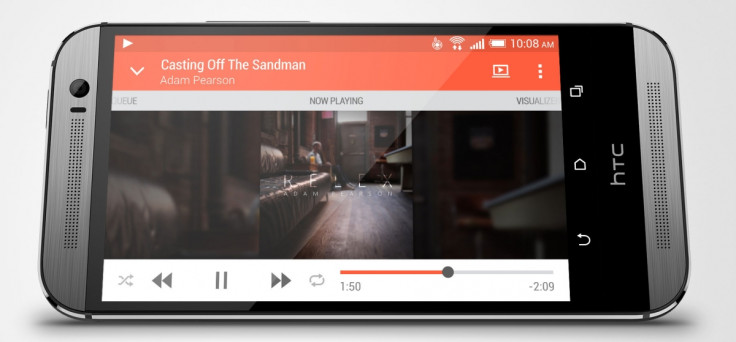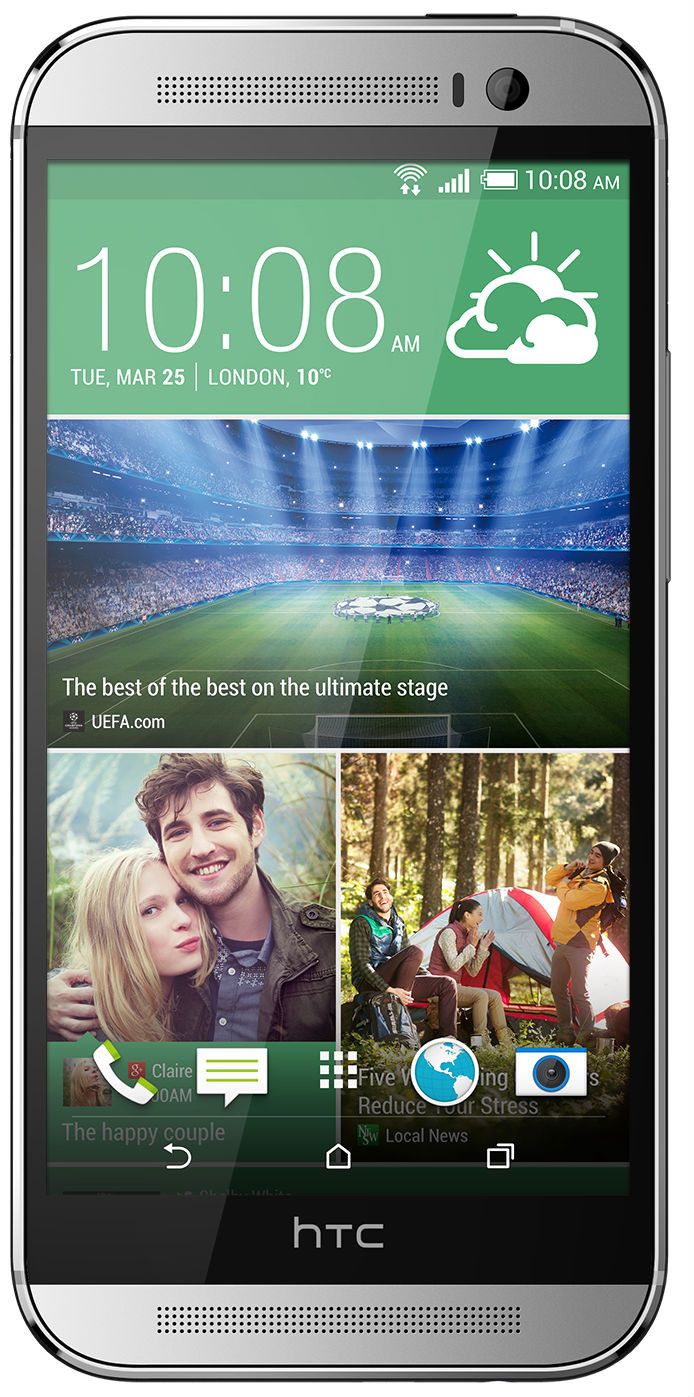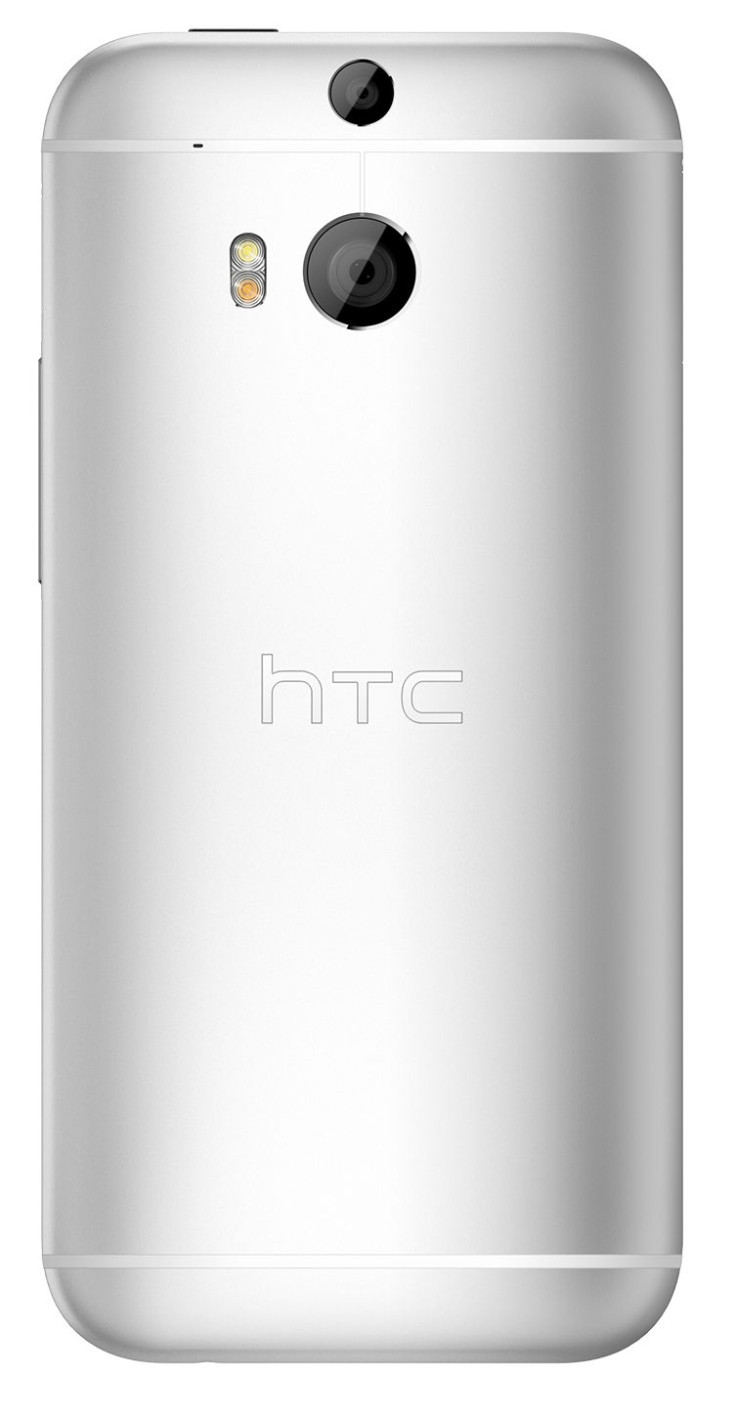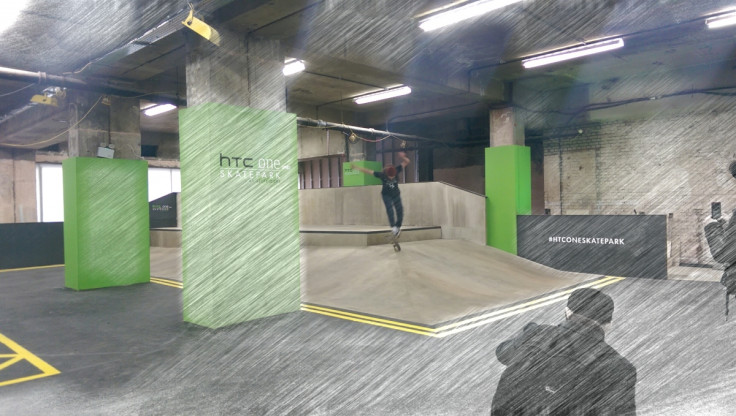HTC One (M8) Review - Even Better Than the Original
Key Features:
- 5in Full HD Screen
- Snapdragon 801 Chip
- 2GB RAM; 16GB Storage
- MicroSD Card
- Android 4.4 w/ Sense 6.0
- Price as Reviewed: £530
HTC One (M8) Review
HTC has essentially made a rod for its own back with the success of the original HTC One. It won so many awards last year I imagine HTC had to build a new wing at its headquarters in Taiwan to hold them all.
That meant the anticipation around the launch the updated HTC One meant it was never really going to live up to expectation, and no matter how well it sells it is not going to solve HTC's financial problems on its own.
But is this bigger, more powerful, louder HTC One better than last year's model? And more importantly, is it better than the Sony Xperia Z2, the Samsung Galaxy S5 and whatever Apple launched later this year?
Let's find out:
Note: For the benefit of everyone (though mostly my fingers, I will be referring to the HTC One (M8) as the M8 from here on in, and the original as simply the HTC One.
HTC One (M8): Design
The industrial design language introduced with the HTC One has been continued with the M8, but at the same time, this feels like a very different phone.
It is curvier, bigger and more metallic.
HTC says the M8 is 90% metal (up from 70% last year) and it shows. The curved rear cover with its brushed-aluminium finish looks and feels great. Some have complained that it is over slippy, but I never found this.

Again the front-facing BoomSound speakers frame the screen above and below, and HTC has made them even better, and if you want to listen to a film on your smartphone (personally I never do) then this is the best phone to do so on.
HTC has taken the decision to move the headphone jack from the top edge to the bottom, and while it's better than having it on the right or left of the phone, it's still not ideal - but it's a minor complaint really.
Overall this feels like a £530 phone. Just as the iPhone does. Just as the Galaxy S4/S5 don't.
HTC One (M8): Screen
HTC has increased the size from 4.7in to 5in while retaining the same 1080 x 1920 pixel resolution.
This means two things.
First you get more screen space. Second the pixel density has dipped slightly from 468 pixels per inch (ppi) to 440ppi. I couldn't tell the difference and I challenge anyone to tell me1 this is a worse screen in terms of sharpness than last year's model.

The bigger screen makes it even harder to use one handed (particularly for small-handed folk like myself), but for watching video, reading text or browsing the web, the M8's screen is simply superb.
HTC One (M8): Performance

HTC is the first manufacturer to launch a smartphone with the new Snapdragon 801 SoC (the Galaxy S5 also uses one but it's not available yet).
It features a quad-core processor clocked at 2.3GHz along with an Adreno 330 GPU all paired with 2GB of RAM.
But what does that mean? It means that the M8 is one of the fastest smartphones I've ever used. Apps open instantly, HD video plays flawlessly and 3D, graphically-intense games like GTA look and play great.
But what does all this power do to battery life?
Well the bigger 2600mAh battery and some smart tricks by HTC mean you easily get a full day's use from the M8. Add to that the Power Saver and Extreme Power Saver modes and at a pinch you will probably eek two days of full use from the phone.
The phone comes in 16GB or 32GB versions. My review unit was 16GB of which around 10GB was available ater taking into account the system software.
Thankfully HTC has seen sense and included a microSD card slot above the volume rocker on the M8, allowing you add a potential 128GB of extra storage.
HTC One (M8): Software
Like all big manufacturers these days, HTC has its own skin, called Sense. The M8 comes with version 6.0 which sits atop the latest version of Google's mobile operating system, Android 4.4.2 (KitKat).

The main addition to the interface is BlinkFeed, which is HTC's visual newsfeed which draws in content from your social networks and particular publications. It has been updated since last year now giving you the choice to create you own feeds for particular areas of interest (films, sports, etc) which is great.
I'm still not convinced that it does anything my Twitter lists don't already do, just in a funkier, graphical manner.
The rest of the interface is pretty typical, though HTC continues to make tweaks to standard parts of Android like notifications, quick settings, the app drawer and recent apps. It's all fine but I really don't see what additional benefit it brings over Google's implementation.
Though, that said, HTC does give you quick access to the audio settings menu when you press the volume button, letting you individually adjust the volume of your ringing volume, notifications and alarm - which is very handy.
HTC One (M8): Motion Launch
The other big change to the interface from HTC on the M8 is Motion Launch - a series of pre-defined gestures which are meant to allow you to interact with the phone without turning on the screen.
The M8 can detect its position and movement, thanks to built-in motion sensors and can adjust what actions to take whether in portrait or landscape mode.

For example, double tapping the screen in portrait mode will turn the screen on without unlocking the phone - if you want to check the time/check for messages - with another double tap locking the screen again.
This works fine when you are holding the phone in your hands, but I found that the time I wanted to use this feature most was when the phone was sitting on my desk, and that's when it doesn't work - which is a pity.
Other actions include a swipe up to unlock when the screen is off (therefore bypassing he need to press the power button on the top of the phone. The problem here is if you have a security lock on the phone (as you certainly should) you still need to input this before unlocking the phone.
Motion Launch is a nice idea, but needs some work to make it a really useful feature.
HTC One (M8):Duo Camera
HTC's one big new feature for the M8 over the HTC One is the Duo Camera.
It uses two sensors positioned one above the other on the rear.
The first is the same 4 megapixel Ultrapixel camera which was introduced on the HTC One. While 4 megapixels may sound puny, the pixels themselves are much larger than traditional sensors allowing in much more light.

The second is a depth sensor, which tells the M8 which objects are in the foreground and which are in the background.
While this doesn't really mean the images you take with the M8 will be any better than they were on the original HTC One, it does open the the door for a huge variety of fun post-capture image processing.
Probably the most impressing is UFocus which allows you to retroactively change the point of focus of any picture. The feature works really well and in conjunction with the Foregrounder setting allows you to create some really interesting images (see above).
Dimension Plus allows for the creation of fun parallax 3D images, letting you use the motion senors in the phone to essentially move around inside the image.
All these - the the plethora of other editing tools, setting, filters, frames and effect which you can use - are great, but I think they are really just a gimmick and after showing them off to a few friends, I can't really find a reason to use them agin.
I would have much rather HTC put a few more megapixels in the Ultrapixel sensor, which would have improved the level of detail available.
The camera is not bad, it's just not great.
HTC One (M8): Price
The HTC One is on sale SIM-free for £530 in the UK through Carphone Warehouse (16GB model). This is typical for high-end smartphones from the likes of Sony, Samsung and Apple.
There are a wide range of contract plans available, with a variety of monthly tariffs and upfront costs. The cheapest plan in the UK without any upfront cost is £42 from Vodafone.
The M8 was never going to challenge the Nexus 5 or the Moto G on price, and will be hoping the rest of its features will be enough to attract customers.
HTC One (M8): Conclusion
The M8 was never going to make the kind of impression the original did. But that's not a bad thing. The original was great and the M8 has built on that.
It is bigger and more powerful with impeccable build quality and an industrial design Jony Ive would be proud of. Yes it's Duo Camera is a bit of a gimmick - but at least it's a gimmick some people may use, unlike the heart-rate monitor on the rear of the Samsung Galaxy S5.
The HTC One (M8) may not be enough on its own to save the Taiwan smartphone manufacturer, but it is still the best phone the company has ever made.
Scores:
- Screen 9/10 – As good as you'll find on a smartphone
- Camera 8/10 – Good, not great. More of a gimmick than proper feature
- Software 8/10 – BlinkFeed still feels unfinished and Motion Launch need work
- Design 10/10 – Beautiful, premium design, that feels as good as it looks
- Build quality 10/10 – Flawless
- Overall 9/10 – HTC has made the One even better than the original
The Good:
- Beautiful design and flawless build quality
- Powerful performance aligned with good battery life
- Great screen
The Bad:
- Duo Camera feels like a gimmick
- BlinkFeed and Motion Launch feel unfinished
© Copyright IBTimes 2024. All rights reserved.







